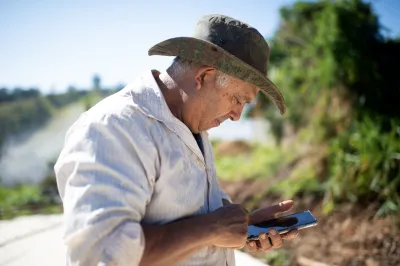Good Things Come in Small Packages: Mobile Money in Fiji
Till Bruett is the Technical Advisor and Project Manager of the Pacific Financial Inclusion Programme, funded by the Australian Agency for International Development, UN Capital Development Fund, European Union, and the United Nations Development Programme, and operating out of Suva, Fiji.
In the world of mobile money, larger countries get all the attention. But big things sometimes come in small packages – and mobile money developments in the tiny Pacific nation of Fiji is an exciting example.
Dueling mobile money deployments have already racked up some impressive numbers in the Fiji Islands, a country of 800,000 people and over 300 islands. After only four months of service, nearly a quarter of all Fijians now have mobile wallets (m-wallets) allowing them not only to transfer money to each other, but also to pay water (and soon electric) bills as well as top up their mobile phone airtime. There is already heavy discussion about linking m-wallets to bank accounts.
Fiji’s recent experience is being closely monitored by other Pacific nations eager to understand the factors that led to such high consumer adoption:
- Increased Competition Among MNOs Encouraged New Product Lines: In 2008, telecommunications liberalization in Fiji led to fierce competition between incumbent MNO, Vodafone Fiji (a majority-owned government joint venture with Vodafone) and new entrant http://digicelfiji.com/Digicel (a privately held company). The competition between the two providers has led to nearly 100% population coverage, better service, and close to a 70% reduction in cost to pre-paid customers. By mid-2009, the rate of growth in new voice subscribers began to wane leading to a search for new value added services to increase average revenue per user (ARPU) and to decrease subscriber churn. The latter helped drive both MNOs to launch mobile money services.
- Isolated Island Geography Encouraged Less Expensive Distribution Models: As the mobile market reached saturation, MNOs needed to reduce distribution costs. The cost of scratch card distribution and the margins to resellers were high across the many islands. Both MNOs introduced P2P airtime transfer and have been transitioning resellers to electronic top-up of airtime to eliminate cards. In some cases, the MNOs helped resellers get bank accounts to enable them to buy more airtime remotely. The electronic top-up also allowed MNOs to reduce the margins paid to resellers. In the process, most Fijians were exposed to transferring value by phone.
- Donors Supported Multiple Market Entrants: Donors decided to support both MNOs rather than predict or choose a “winner.” The two MNOs conducted simultaneous pilots and launched within one month of each other. The competition has led both to put in more of their own resources than originally planned and aggressively seek business.
- Regulator Committed to Financial Inclusion and Proportionate Regulatory Approach: With advice from CGAP, the Alliance for Financial Inclusion and the GSMA Mobile Money for the Unbanked programme, the Reserve Bank of Fiji agreed to take a “risk based” approach to mobile money. While it did not exempt MNOs from Know Your Customer (KYC) and suspicious transaction reporting requirements, the Reserve Bank of Fiji did permit customers unable to provide formal IDs to instead submit a letter from a “suitable referee” such as village or religious leaders.
- An Unexpected Push from the Telco Regulator: In the middle of the m-wallet launch, the government decreed that all SIM card holders had to register their mobile numbers – in just two months. This led to a massive and costly effort by the MNOs to register their clients. However, it also provided an opportunity to market mobile money services and enroll clients. One MNO has piloted paperless “self-registration,” allowing customers to register remotely through their phone for the m-wallet because their relevant information (and picture) are now on file.
There is still a lot to be done in Fiji. The services have not yet reached a “tipping point” where transaction volumes skyrocket. The MNOs are just getting to the outer islands and it remains to be seen how rural Fijians take to the service. But at the same time, several organizations and government agencies have announced their intent to use m-wallets for everything from communal land lease payments to credit union loan repayments.
Given Fiji’s potential to create the first mobile money ecosystem – not just a payments platform – the smallest countries may indeed prove to have the biggest ideas.
- Till Bruett



Add new comment